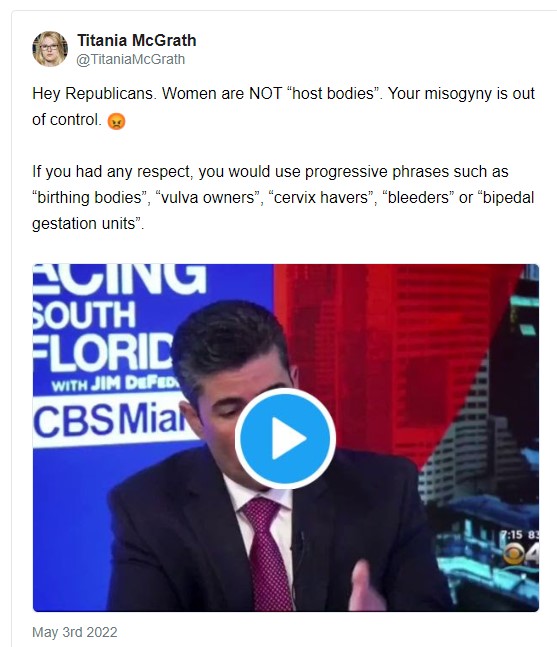Is a particular person was a "woman"? For most of my life, everyone I knew would say that the question is answered by considering what kind of genitals that person had. For many people, the answer to that question is no longer answered purely by biology. And to make the discussion all-the-more confusing, transgender activists insist that "intersex" conditions are relevant to this discussion while others consider intersex a red herring.
Lindsay Hecox v Bradley Little [Governor of Idaho] will weigh in on this issue. This appeal is pending in the Ninth Circuit (and perhaps headed to the United States Supreme Court). The context is transgender sports competition involving students in Idaho. A new Idaho statute is the focus of this lawsuit. The following excerpt is a description of Idaho law taken from the appellate brief of Idaho (the Defendant):
The statute at issue is the Fairness in Women’s Sports Act, Idaho Code §§ 33-6201 through -6206. The Act excludes members of the male sex from participating in sports designated for athletes of the female sex due to males’ physiological advantages, consistent with settled Ninth Circuit law . . . . The Act also permits male and co-ed teams, both of which are open to members of either sex. See Idaho Code § 33-6203.
To ensure the Act’s protections for female athletes, the Act provides that if a dispute arises over a student’s sex and eligibility for female sports, the student may establish female sex in one of three ways: through a high school health examination and consent form signed by a health care provider, which all student-athletes must submit; through another written statement signed by the student’s health care provider; or through a sports physical examination, in which the health care provider relies on one of three specified criteria to determine sex. See Idaho Code § 33-6203(3). See also ER 417-19 (Idaho High School Activities Association Health Examination and Consent Form); IHSAA Rule 13 (requiring high school athletes to submit form). The Act does not provide any sex-verification procedures for male or co-ed sports, because they are open to all, regardless of sex. In support of the bill, the Idaho Legislature made a number of findings based on court decisions, scholarly publications, and scientific studies recognizing the physiological advantages members of the male sex have over their female counterparts. Idaho Code § 33-6202(8)-(11). The Legislature also described the Act’s purpose:
Having separate sex-specific teams furthers efforts to promote sex equality. Sex-specific teams accomplish this by providing opportunities for female athletes to demonstrate their skill, strength, and athletic abilities while also providing them with opportunities to obtain recognition and accolades, college scholarships, and the numerous other long-term benefits that flow from success in athletic endeavors.
Id. § 33-6202(12).
Plaintiffs describe the Idaho law at page 8ff of their brief.
A federal trial court granted an injunction, holding that the above law violates federal law. See the Idaho Brief at pp 6-7 and the Plaintiffs' brief, pp. 2-4 for more detail. This is a fascinating set of briefs for many reasons, one of them being that if you read both briefs, it is often hard to believe that they are describing the same lawsuit. That is because the crux of the case is whether one of the two plaintiffs, Lindsay Hecox, is more accurately described as male versus female. Consider Hecox's descriptions in the two briefs:
[From the Plaintiffs' Brief, p. 15: "Lindsay is a woman athlete living in Idaho who is transgender." Plaintiffs' brief includes a photo of Lindsay:

[From Defendant Idaho's Brief] "One plaintiff is Lindsay Hecox, who is transgender, and whose sex is male but whose gender identity is female."
Both sides agree that Lindsay is "transgender." As you can see, Plaintiffs claim she is "a woman" while Idaho states that the "sex is male."
I haven't yet read every word of every brief, but I have reviewed a lot of the filings. In case anyone is interested in following along to see exactly what is being claimed as far as the "facts" or the law, you are welcome to click on the links below. My focus is biology, but the Plaintiffs claim that biology does is not determinative.


